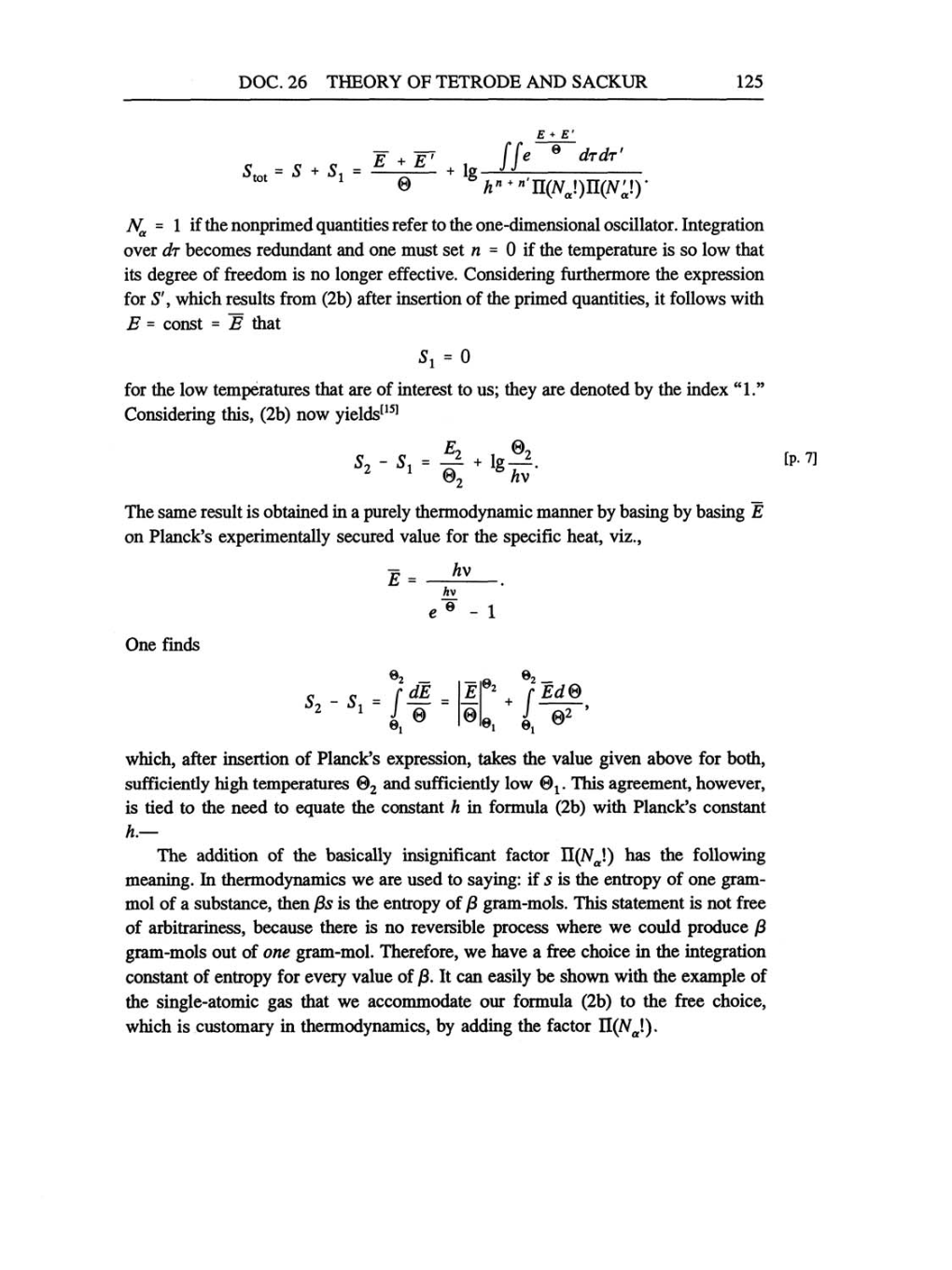DOC. 26 THEORY OF TETRODE AND SACKUR
125
^tot
-
S
+
S1
-
E
+
E'
©
lg
//e
E
+
E'
8
drdr'
hn
+
n'IL(NJ)IL(N'a\y
Na
=
1
if
the
nonprimed quantities
refer to
the
one-dimensional oscillator.
Integration
over dT
becomes redundant and
one
must set
n
=
0
if
the
temperature
is
so
low that
its
degree
of
freedom is
no longer
effective.
Considering
furthermore the
expression
for
S',
which results from
(2b)
after insertion
of
the
primed quantities,
it follows with
E
=
const
=
E that
S1
=
0
for the low
temperatures
that
are
of
interest to
us;
they are
denoted
by
the index "1."
Considering this, (2b) now
yields[15]
S2
S11
=
2 0
lg
©2
hv
The
same
result
is obtained in
a purely
thermodynamic manner by
basing
by basing
E
on
Planck's
experimentally
secured value for the
specific heat, viz.,
E
=
hv
hv
0 -1
One finds
e
So
-
S
2
dE
f
an
1
*
10'
0
0
0
+
0
/
2
Ed®
1
0
1
02
which,
after insertion
of Planck's
expression,
takes the value
given
above for
both,
sufficiently
high temperatures
©2
and
sufficiently
low
©1.
This
agreement, however,
is tied
to
the need to
equate
the constant
h
in formula
(2b)
with Planck's constant
h.-
The addition of the
basically insignificant
factor
II(Na!)
has the
following
meaning.
In
thermodynamics we are
used to
saying:
if
s
is the
entropy
of
one
gram-
mol
of
a
substance,
then ßs is the
entropy
of
ß
gram-mols.
This statement is not free
of
arbitrariness,
because there is
no
reversible
process
where
we
could
produce
ß
gram-mols
out
of
one gram-mol.
Therefore,
we
have
a
free choice in the
integration
constant
of
entropy
for
every
value of
ß.
It
can easily
be
shown with the
example
of
the
single-atomic
gas
that
we
accommodate
our
formula
(2b)
to the free
choice,
which is
customary
in
thermodynamics, by adding
the factor
II(Na!).
[p. 7]
